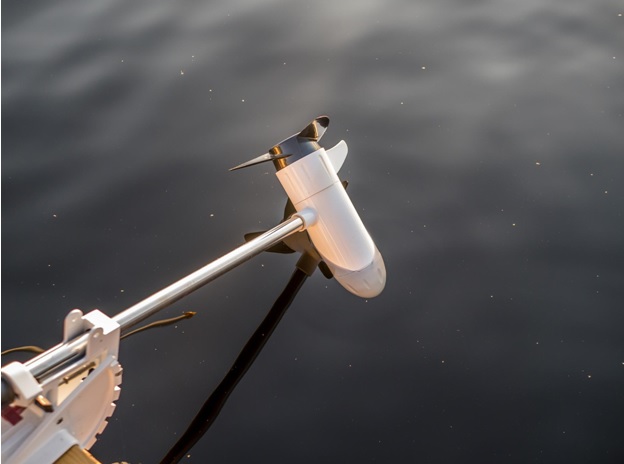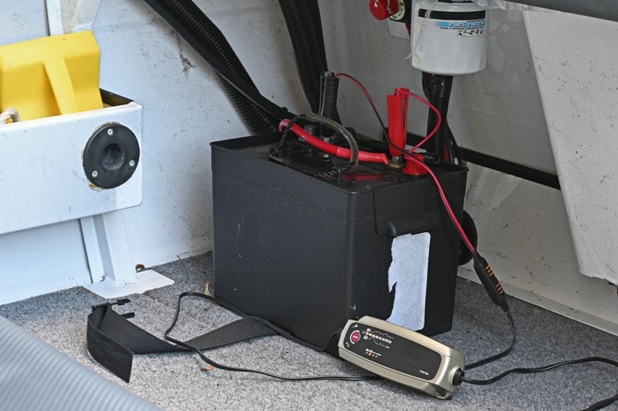Posted by Forrest on Jun 15th 2024
Caring for the Motor of an Old Town Autopilot 120 Fishing Kayak
You have to love the fact that the Old Town Autopilot 120 comes pre-configured with a 12V, 45 lb, saltwater-ready Minn-Kota trolling motor, and is engineered with Spot-Lock technology that helps you hold a position, effortlessly.
What you don’t have to love is the (considerably) more involved maintenance involved with caring for a trolling motor as compared to a paddle or even a pedal drive.
No worry - we’re here to help with that. Here’s how to keep your Old Town Autopilot 120’s motor in top shape.
How to Keep That Motor Whirring
The first and most important aspect of basic trolling motor maintenance is not to abuse it. The Minn-Kota with which the Old Town Autopilot 120 is equipped is saltwater ready, and has special technology to protect it against impacts, but you should still avoid them if you can.
Also, one of the most important things you can do to prevent straining the motor is to make sure the prop never sucks up any weeds or line - and if it does, to clean them off immediately, and if not immediately, then as soon as possible.
Weeds and line wrapped around your prop, or worse, behind it, can strain the motor drive unit, and can compromise seals, allowing water in.
Not only do you need to disengage what you can see, but when you get back, disconnect power, remove the prop, and clear any debris that’s wrapped around it or has worked its way behind it.
When you have the prop removed, it’s a good time to check the prop pin. This is a metal part that’s designed to break on severe impacts, thereby protecting your prop and driveshaft from greater damage.
They’re easy to replace once bent, and you should if you do find that yours is bent.
Another thing is to keep it clean. Yes, these Minn-Kota trolling motors are designed to be saltwater-ready, but if you take it out in the salt, always spray it down - thoroughly - with freshwater when you get home.
This will help prevent salt accumulation and corrosion that can damage the internal circuitry or parts. It’s just as important as spraying down the yak - trust us.
Next to rinsing, lubricating the motor shaft is equally important. Lubrication not only helps it move freely but, after washing, helps prevent corrosion from advancing.

Any water-based silicone lubricant will work - Minn-Kota also recommends Armor All - first, rinse off, clean, and dry the trolling motor shaft, then spray it down with the lubricant. You can also apply some with a clean rag.
Make sure it is water based, not oil based, and apply after every outing if you take the yak in the salt. You can get away with an application after every few outings if you only ever go in freshwater.
Vibration is another concern with the use of a trolling motor. It can loosen mounting bolts and worse, subjecting them to damage when the yak pitches or rolls, when conditions are less than favorable.
Therefore, before you go out and after you get back, always check all fasteners and mounting points and make sure they are quite secure and snug before launching the vessel again.
Before storing your trolling motor for any prolonged period of time - such as at the end of the season - always coat all exposed metal parts with a water-based lubricant that will also help prevent corrosion.
Always disconnect your trolling motor from the battery before long-term storage, too. This will help protect both the motor and prevent parasitic drain which is deleterious to battery lifespan and performance.
On that note, a word on battery care is necessary.
Basic Battery Care

Your Old Town Autopilot 120’s Minn-Kota is not an island - it needs a healthy, properly charged battery to perform at peak, too.
The most basic thing to observe is that all connections at the battery terminals are tight before heading out on the water. Loose connections can result in poor performance and unresponsiveness, resulting in headaches.
Moreover, you need to make sure your battery terminals are clean. Corrosion usually takes the form of a bluish-white, powdery discharge, especially from the positive terminal. Use a bit of sandpaper, a brass or steel wire brush, or just an actual battery terminal keeper to prevent an accumulation of discharge or corrosion.
Proper battery storage is also critical. Always disconnect the motor from the battery prior to storage and never expose the battery to extreme temperatures. Both very high and very low temperatures can adversely affect battery performance and lifespan.
Make sure you store the battery somewhere above freezing, but below, say 80℉ if possible. Also, do not store the battery anywhere it will experience high humidity, if possible. These conditions will drain the battery, make it difficult for it to hold a charge, and in the case of humidity, can accelerate or exacerbate corrosion.
Draining a battery is one of the quickest ways to diminish its service lifespan. Always recharge your battery when you get back to the dock, ideally to a full charge, if you can. Another thing you can do is purchase a marine battery maintainer and leave it hooked up to that when not in use.
One more tip: if you have the boat out in the open, keep the motor and battery covered. This will protect them from both sun and rain, both of which can damage them over time through prolonged exposure.
Questions About Your Old Town Autopilot 120 Fishing Kayak?
All in all, if you keep to the tips, suggestions, and general guidelines detailed in this article, your Old Town Autopilot 120’s Minn-Kota should keep humming for many years to come - as should the battery you use to power it.
Nonetheless, if you have specific questions about how to properly care for your trolling motor or battery and need our expert assistance, we are here to help. Get in touch with us at 512-229-0560 or at Support@NoBadDaysKayak.com.

